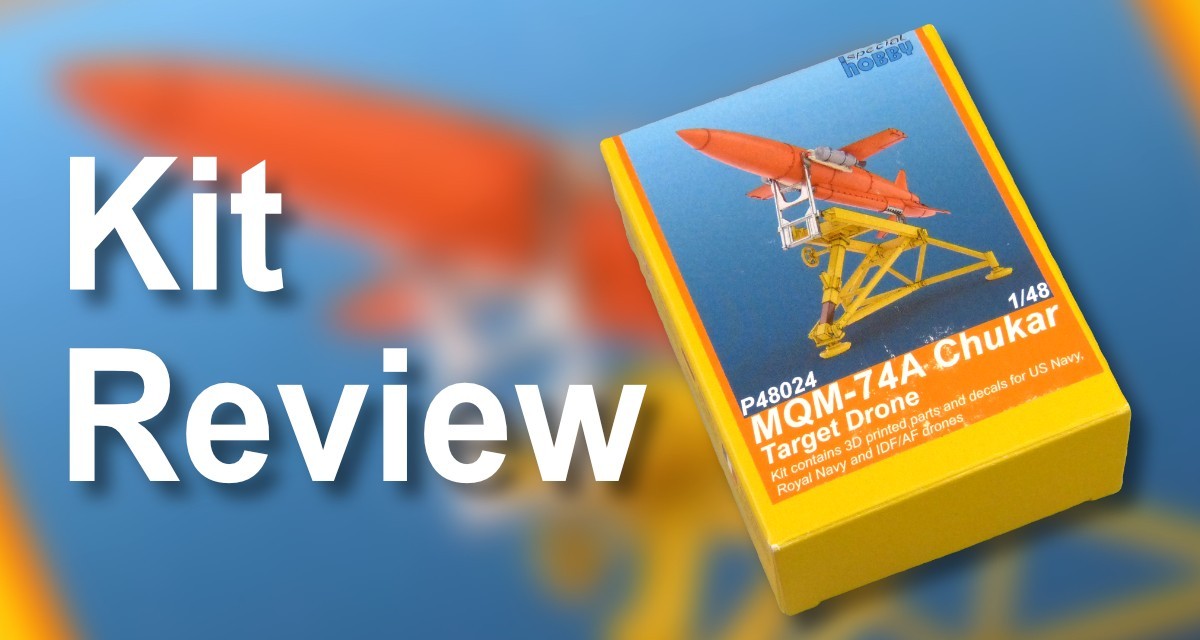
Background
In the early 1960s, the U.S. Navy had a requirement for a small jet-propelled aerial target for anti-aircraft gunnery and missile training and system evaluation. Northrop Ventura (formerly Radioplane) built their Model NV-105 to that specification in 1964. The delta-winged NV-105 was followed by the straight-winged NV-105A in 1965 which was eventually mass-produced for the U.S. Navy from 1968 as MQM-74A.
The MQM-74A is powered by a Williams J400-WR-400 (Model WR24-6) turbojet, and can be launched from land or ship-based zero-length launchers aided by two solid-propellant JATO rocket bottles. The target has a command guidance system, and the operator can track it either visually or through radar. The Chukar can be recovered by parachute, which is deployed by remote command or automatically when the command link is damaged. Mission equipment of MQM-74 targets can include passive and active radar augmentation devices, wingtip-mounted infrared flares, a smoke system for visual augmentation, and tow targets. There is also a floatation gear kit for recovery over water.
Source: Designation-Systems.Net
The Kit
CMK's Chuka is packed in a tough little end-opening box with the 3D-printed parts inside a zip-lock bag. They're attached to a thin base that has a slight amount of flexibility which probably helps cushion everything in transit. The sample kit arrived perfectly intact and comprises:
16 x grey 3D-printed parts
Decals for 6 x colour schemes
The printed parts are excellent and the advantages over conventional resin casting are clear with the detail on undercuts and total absence of any flash. The parts are supported on a latticework of fine strands and preparation looks to be very straightforward. I'd recommend working carefully with a new scalpel blade or a very fine razor saw to avoid overstressing the more delicate of the pieces. A quick test shows the material cuts and sands easily.
The kit comes complete with a launcher that can be assembled stowed or ready for launch. The Chuka itself has a choice of nose cones and three types of rocket boosters.
CMK provide a clear set of colour printed instructions with assembly broken down into 4 easy stages. Colour matches are given for Gunze Sangyo paints.
The kit includes decals for 6 Chukas - 2 x US Navy, 2 x Royal Navy and 2 x Israeli Air Force.
The small sheet of decals is very well printed in perfect register. Examined under a strong magnifier, the colours can be seen to be formed of ultra-fine dots, but this is isn't evident to the naked eye at normal viewing distances. The glossy items have a bit of excess carrier film, but my experience using recent CMK/Special Hobby decals has shown this snuggles down fine with standard decal solutions.
Conclusion
CMK's MQM-74A Chuka is a very neat little kit, and I think it would make an ideal introduction to working with 3D-printed parts because it's packed with detail but should still be very straightforward to prepare and assemble.
Kit #P48024 is available now from Special Hobby - Price: 19.90 Euros
Many thanks to Special Hobby for the review sample.
Please remember, when contacting retailers or manufacturers, to mention that you saw their products highlighted here - on AEROSCALE

